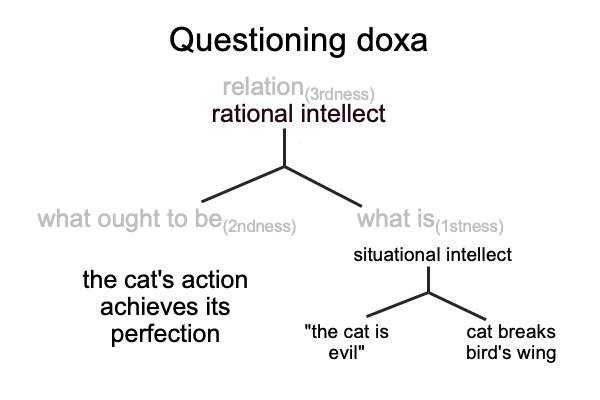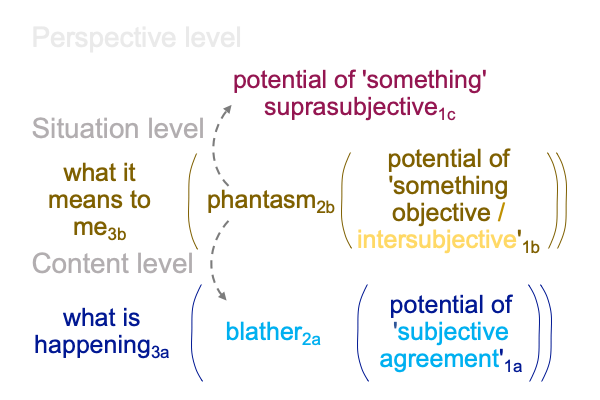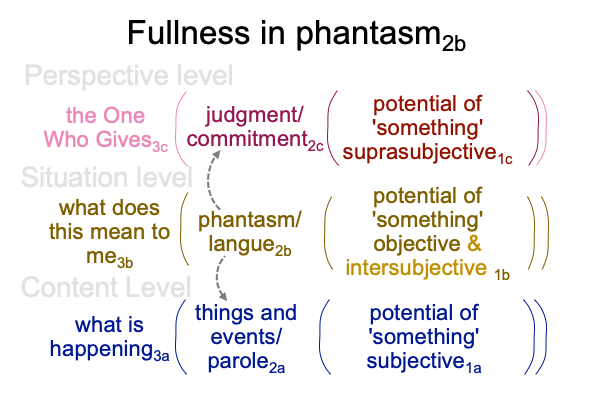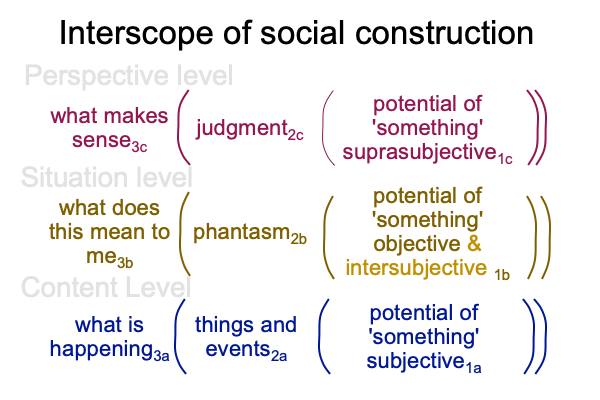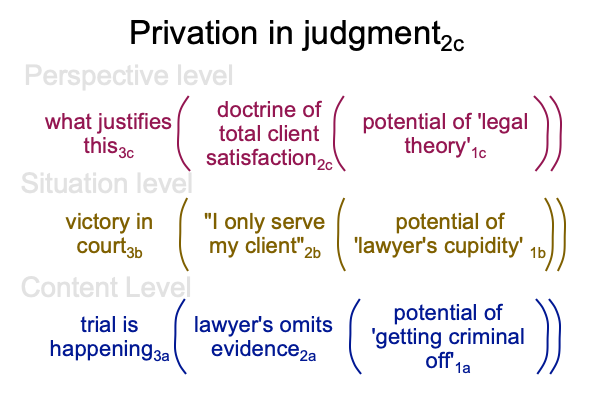Looking at Kirk Kanzelberger’s Essay (2020) “Reality and the Meaning of Evil” (Part 7 of 18)
0028 Our spoken words2a weave the fabric of our subjective reality1a by telling us what is happening3a.
The observer states her impression that the cat is evil. The statement would be accurate if the cat is a person. However, the cat is just a cat. The cat is not a symbol of a person. It is a natural being.
0029 In section three, Kanzelberger states that no living animal or plant strives for privation. Each strives for its own good, its own fullness of being. Since the fullness of one may conflict with the fullness of another, privation is proportioned according to the food chain. The bird knows that. The cat knows that. Well, if they don’t, they certainly behave as if they do. The bird flits nervously. The cat stalks its prey.
In nature, agents for privation and death stand ready at hand. They carry the aura of inevitability. Not even the mountains stand forever. Is there a cosmic beauty to this pervasive evil? Everything is tested, horribly, relentlessly and in reality, by conflicts among diverse goods and forces.
Yes, outcomes vary. Some conflicts end as win-win. Some end as lose-lose. Most end as win-lose. In these win-lose contests, the agent who wins is satisfied, but may symbolize “evil”. The unsatisfied agent may escape the label of “evil”, but at what cost? Starvation? The sufferer loses and may be granted the symbol of “victim”. The one who avoids danger becomes “happy go lucky”.
0030 What does this imply?
First, obviously, a lot of energy flows through biological systems. An animal or plant cannot rest in the fullness of its being. Metabolism demands fuel. Metabolism drives many of these conflicts.
0031 What if I declare that metabolism is evil?
Surely, it is a common denominator in the good of all living things. Without it, there would be no conflict. The lion would lie with the lamb.
Yes, both would be dead.
0033 Natural evil does not make sense. Surely, we need not imagine that rocks or photons suffer when annihilated, but the same cannot be said for animals and plants. Natural evil, the conflict among subjective goods and the playing out of privations, makes no sense, in a world where each subject has its own metabolism.
It makes far more sense to imagine that all the actors are human.

